Botafogo occupy first place in Campeonato Brasileiro Série A with 48 points, 11 ahead of Palmeiras in second place, with both having played 20 matches.
They have achieved many good numbers, as they have the best defence line in Brasileiro Série A, having conceded only 11 goals, and the second-best attack line, scoring 35 goals, one goal behind Palmeiras, who scored 36 goals.
Among the many things that distinguish Botafogo are set pieces, and we will specifically mention the attacking corners, as they are the second most prolific team in Brasileiro Série A from corners with five goals, tied with Fluminense and Goiás, after Palmeiras, who scored six goals from corners.
In this tactical analysis and set-piece analysis, we will discuss the tactics of Bruno Lage‘s team at attacking corners and how they varied and helped them to threaten the opponent’s goal.
Floated crosses
They usually prefer to use floated crosses because they take a long time in the air, giving their excellent players in aerial duels time to measure the cross and then move to the area where the ball lands.
At the same time, defenders look at the sky following the ball, so they have a problem in orientation.
After all, they can’t track the ball and the attackers simultaneously.
Floated crosses also give the attackers time to reach the targeted area from off-the-ball movement, which gives the attackers the power to jump; let’s see how.
In the first photo, the opponent defends with five zonal defenders in the first zone line, a yellow player in front of them to defend the flick and go to defend the short corner; if this happens, a blue player to defend the rebound zone and three man-markers in the black area where the targeted player stands, highlighted in red.
In the second photo, as the taker starts to move, three runners move forward, dragging one of the man-markers in the black area, leaving our red-targeted player in a 2v2 situation, but the green player moves back trying to drag one marker, leaving our targeted player in a 1v1 case, but the defender understands the trick and still stands in his position.
The third photo shows a 3v1 situation against the targeted player, the last zonal defender, in yellow, and two man-markers in blue and green.
In the fourth photo, the ball is too high in the air, highlighted in blue, so the attacker who stands behind them has positional superiority and can see the three defenders and the ball at the same time, especially when the cross is out swinging, and also has the time and space to choose the right moment to come from their blind side and jump while they are still looking at the sky watching the ball missing the connection with him.
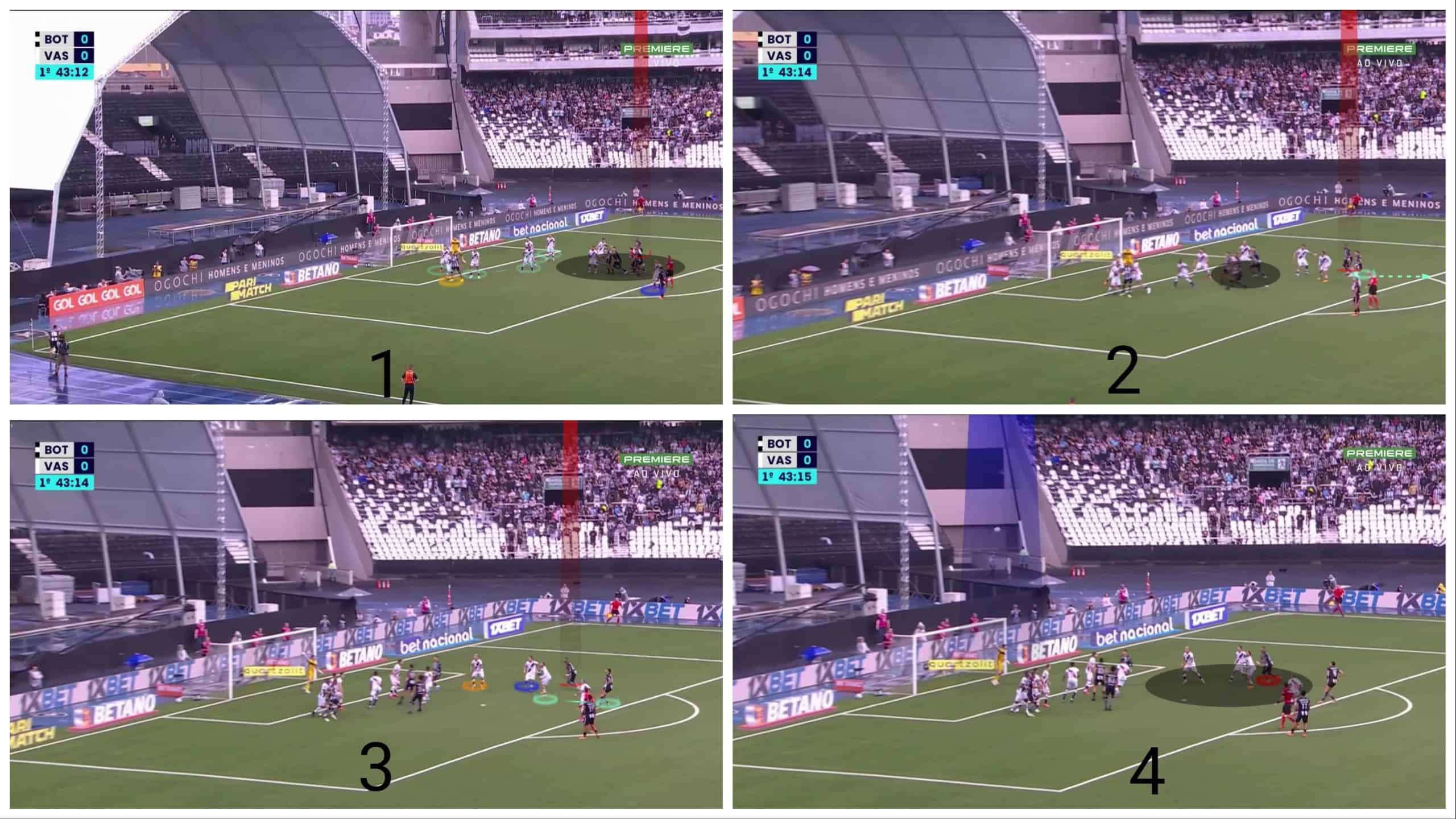
The plan works, so the attackers can jump from the defender’s back while he can’t even see him, as shown below.
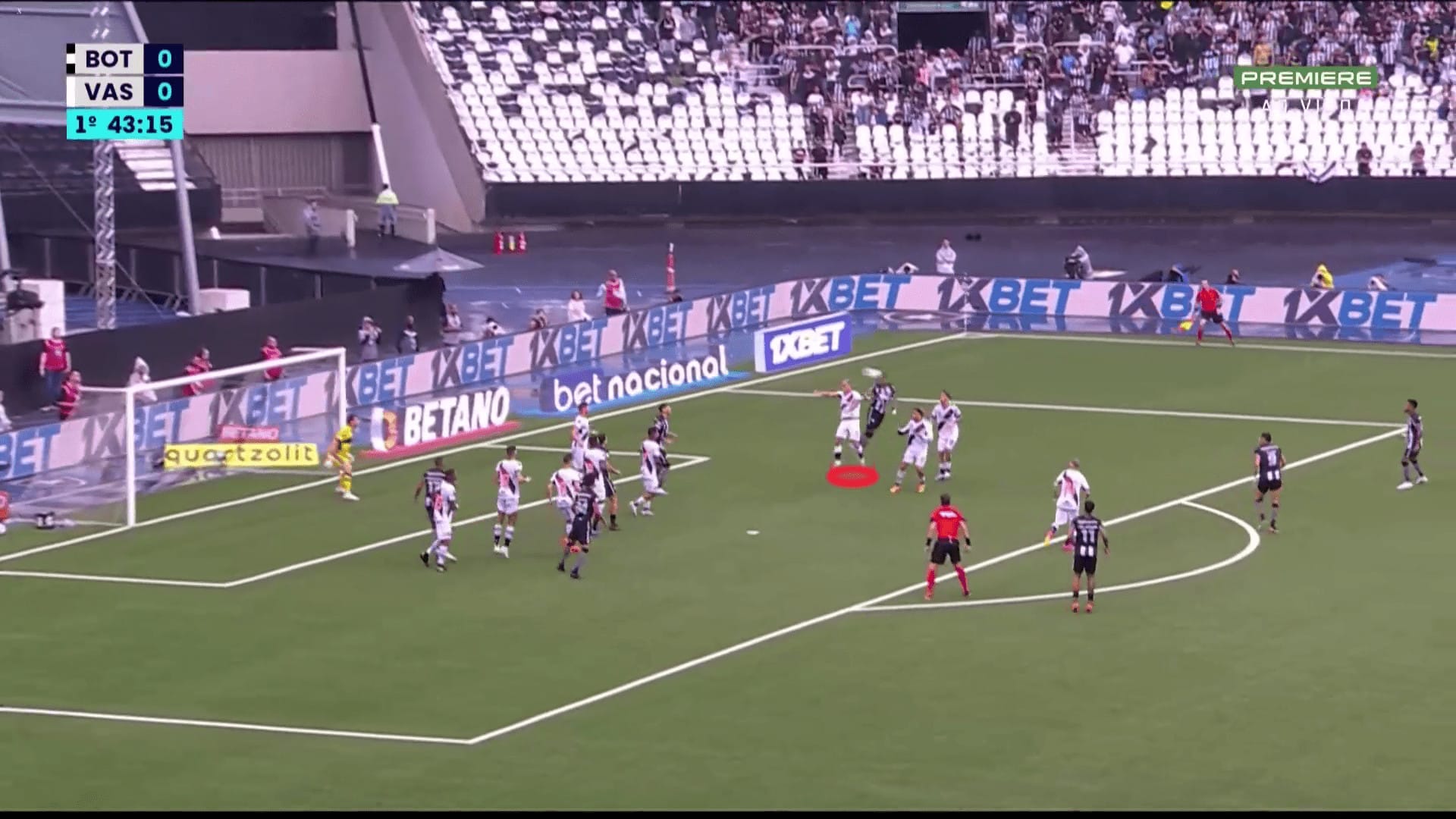
Unfortunately, the ball goes near the far post, as shown below.
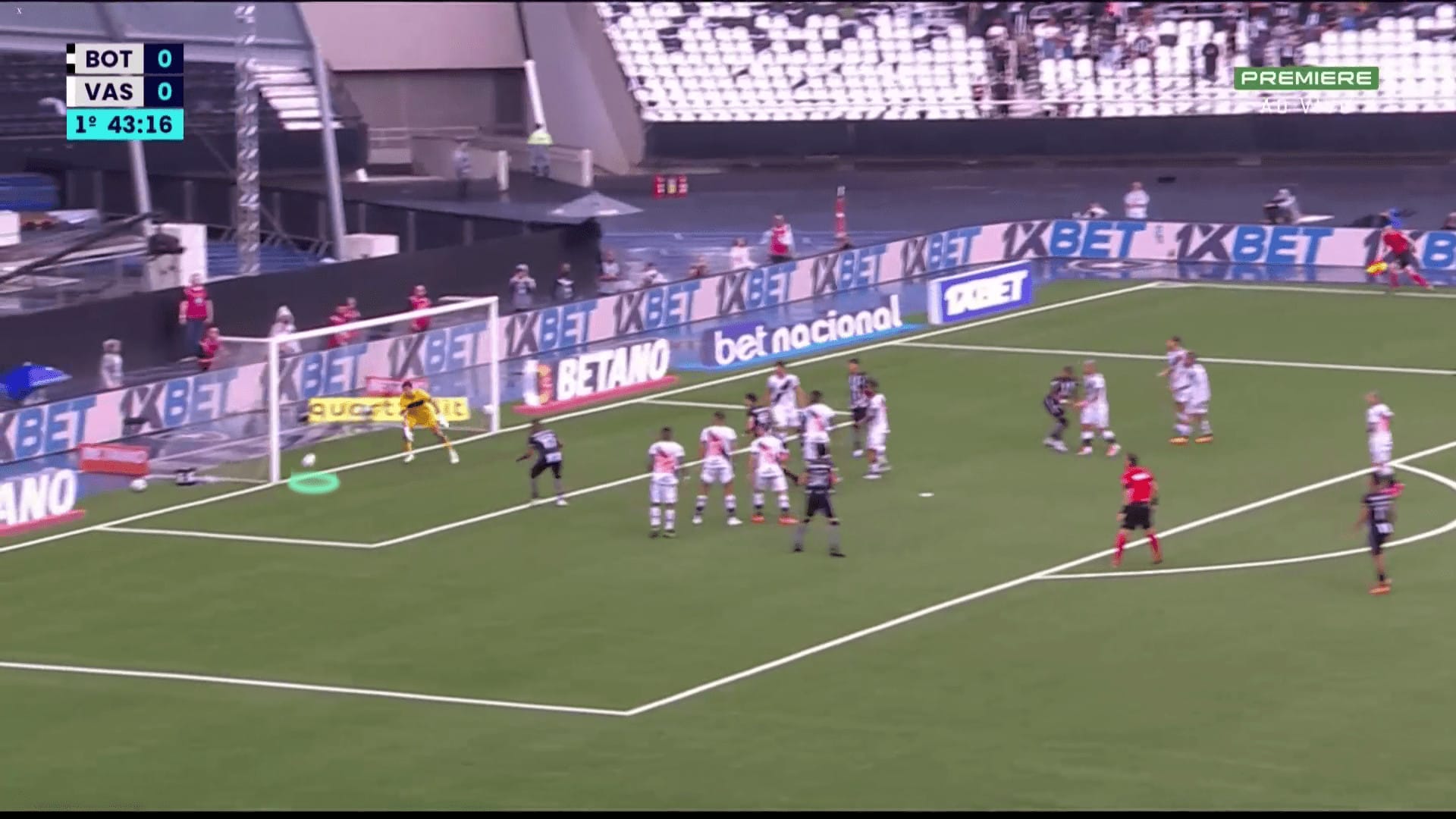
Late runners
They also usually use all or most of their runners near the penalty spot, far away from the zonal defenders, to face only the man-markers having a numerical superiority over them.
This gets the point against teams who defend with the hybrid defending system because teams can have two, three or four players as man-markers in maximum, so if Botafogo attack with six runners in the penalty spot, they have a numerical superiority.
They use this numerical superiority differently, and we will start by overloading.
In the first photo, the opponent defends with five green defenders in the first zone line, a player in front of them for the first touch, a yellow player for the rebound and three man-markers in the black area.
So Botafogo overloaded the penalty spot area by six runners to be in a 6v3 situation.
In the second photo, the zonal defenders try to move up to help the man-markers, but they don’t have the time, and also because three attackers move forward to block them, leaving the three targeted attackers at the back moving late to have the space to jump.
The plan works in the third photo, and the red player gets the ball, but the goalkeeper gets the weak shot, as in the fourth photo.
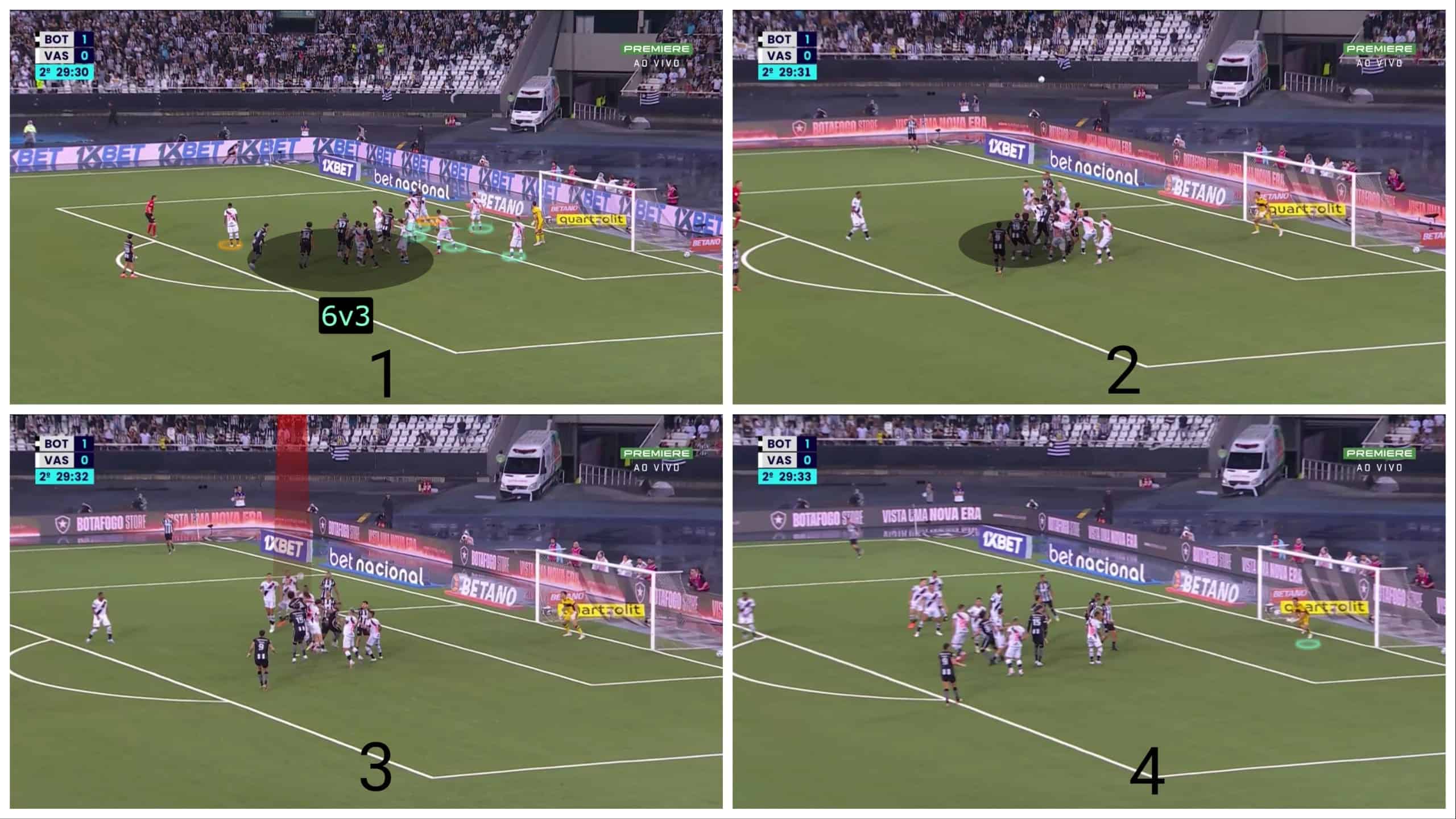
In this case, there is a 6v4 situation, as in the first photo, so the two green attackers in the second photo are free; one of them moves to the near post, as in the third photo in green with another attacker, to drag some of the markers to reduce the traffic in front of the rest.
In the fourth photo, the plan works, but the two attackers hit each other.
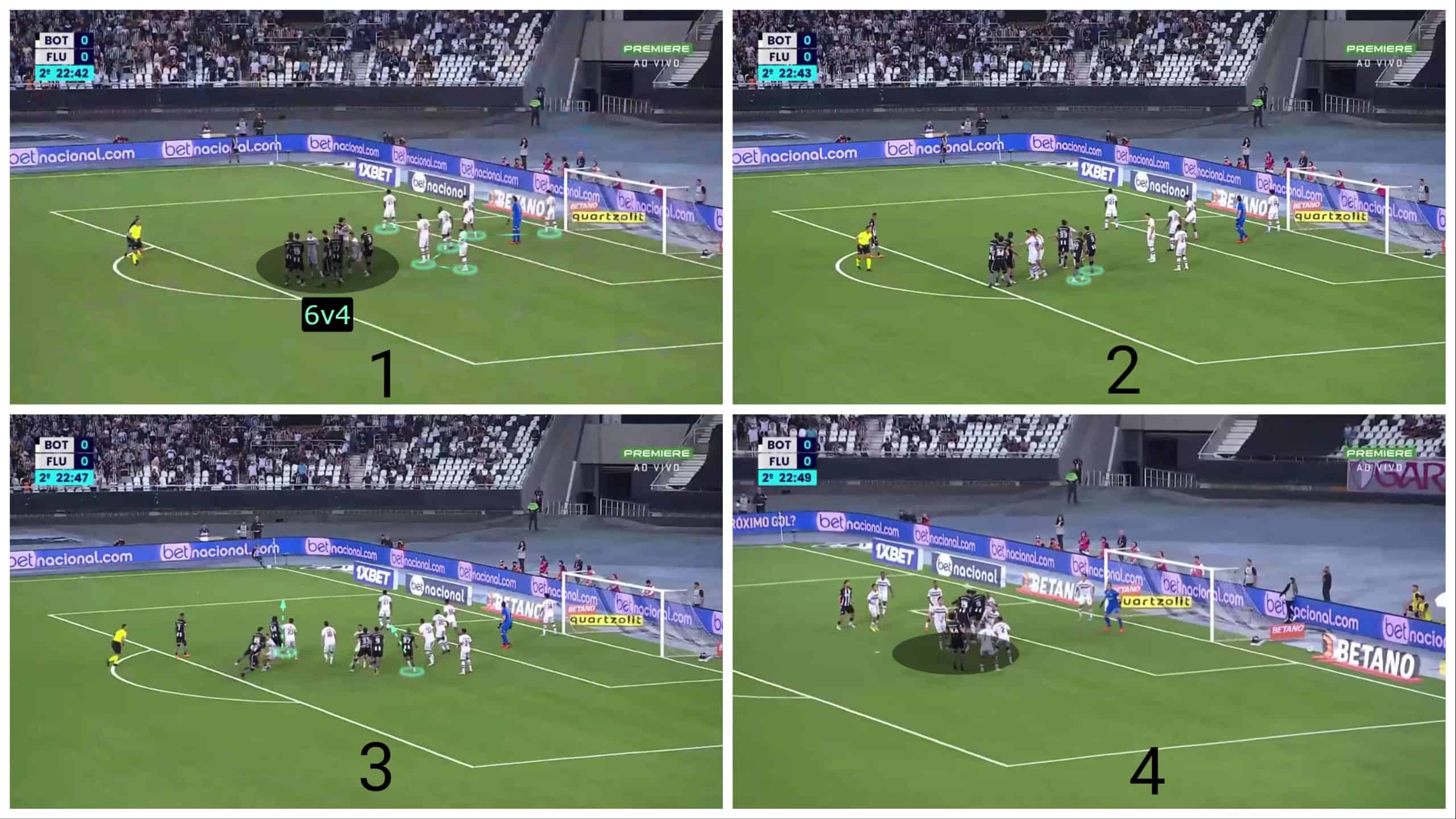
They also have other ways to best use this numerical superiority against man-markers.
One of these ways is to stand in different areas to free a player, which happens in different ways; let’s see how.
In the first photo below, the opponent is defended by five defenders in the first zonal line, highlighted in green; three man-markers, highlighted in blue; a red player to defend the short option, if that happens; and a yellow player to defend the rebound.
In the second photo, our targeted player is late as usual, highlighted in red, without marking, not only because he starts from the edge of the box but also because the three man-markers are busy with three attackers in different areas, highlighted in green.
In the third picture, the zonal defender, highlighted in yellow, tries to get out to the targeted attacker, highlighted in red, when the ball is in the air, but the attackers run a long space, so he has a dynamic superiority against the defender because he has the power to jump and also because of the out swinging cross which makes the attacker can see the ball and the defender at the same time, unlike the defender who has a problem in orientation.
In the fourth photo, the attacker gets the ball after an excellent jump, highlighted in red.
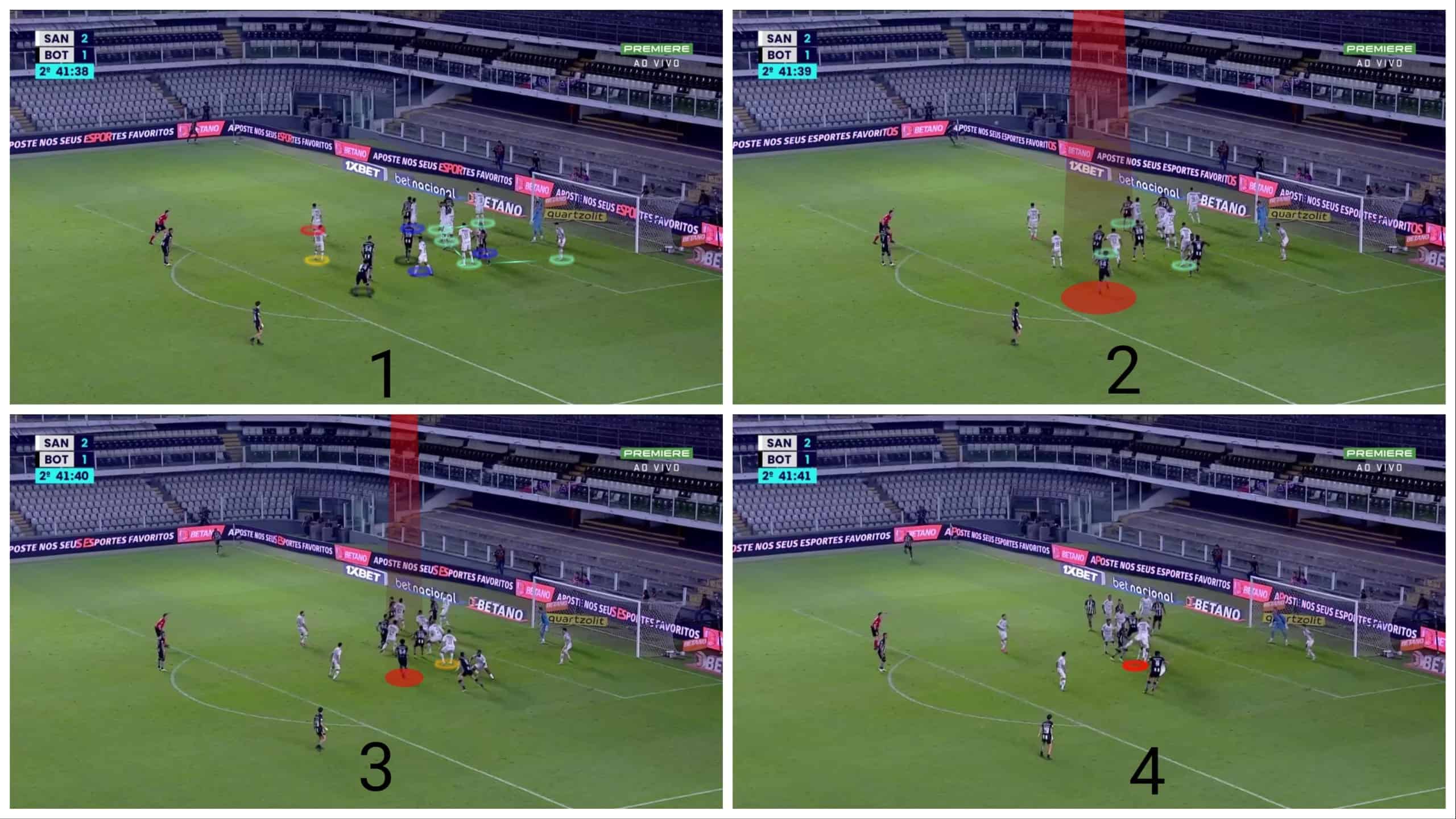
The result is a goal, as shown below in green.
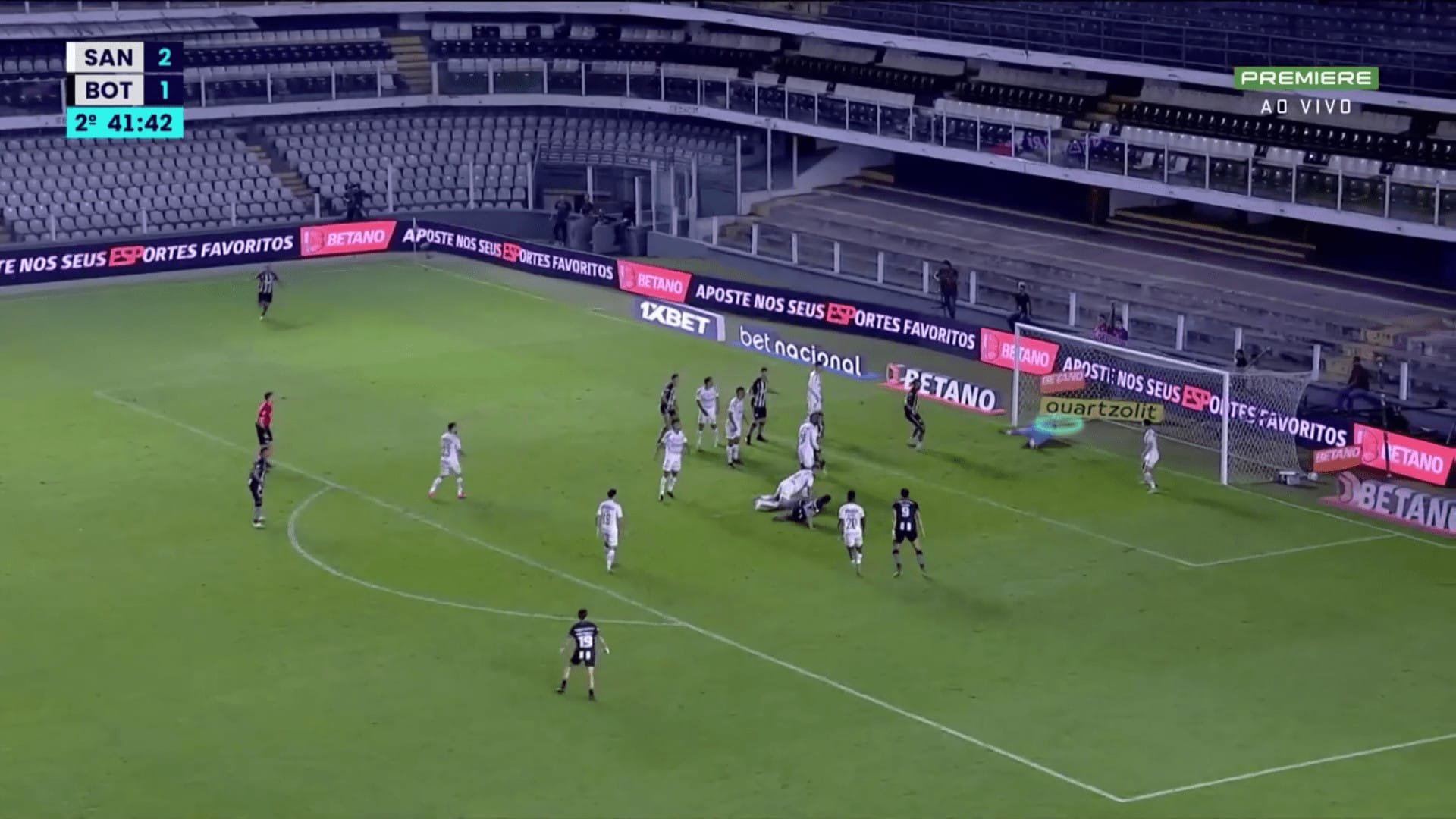
After that, they depend on the same strategy in the same match to free a player away from the zonal defenders, but not a specific player; let’s see how in the photo below.
The five zonal defenders in the first zonal line are numbered in black, while the three man-markers stand in a vertical line in the middle, highlighted in green.
One of the man-markers leaves the near post attacker, highlighted in red, to mark the attacker on the edge of the box who scored the previous goal, but Botafogo have no problem because they targeted the free red attacker on the near post.
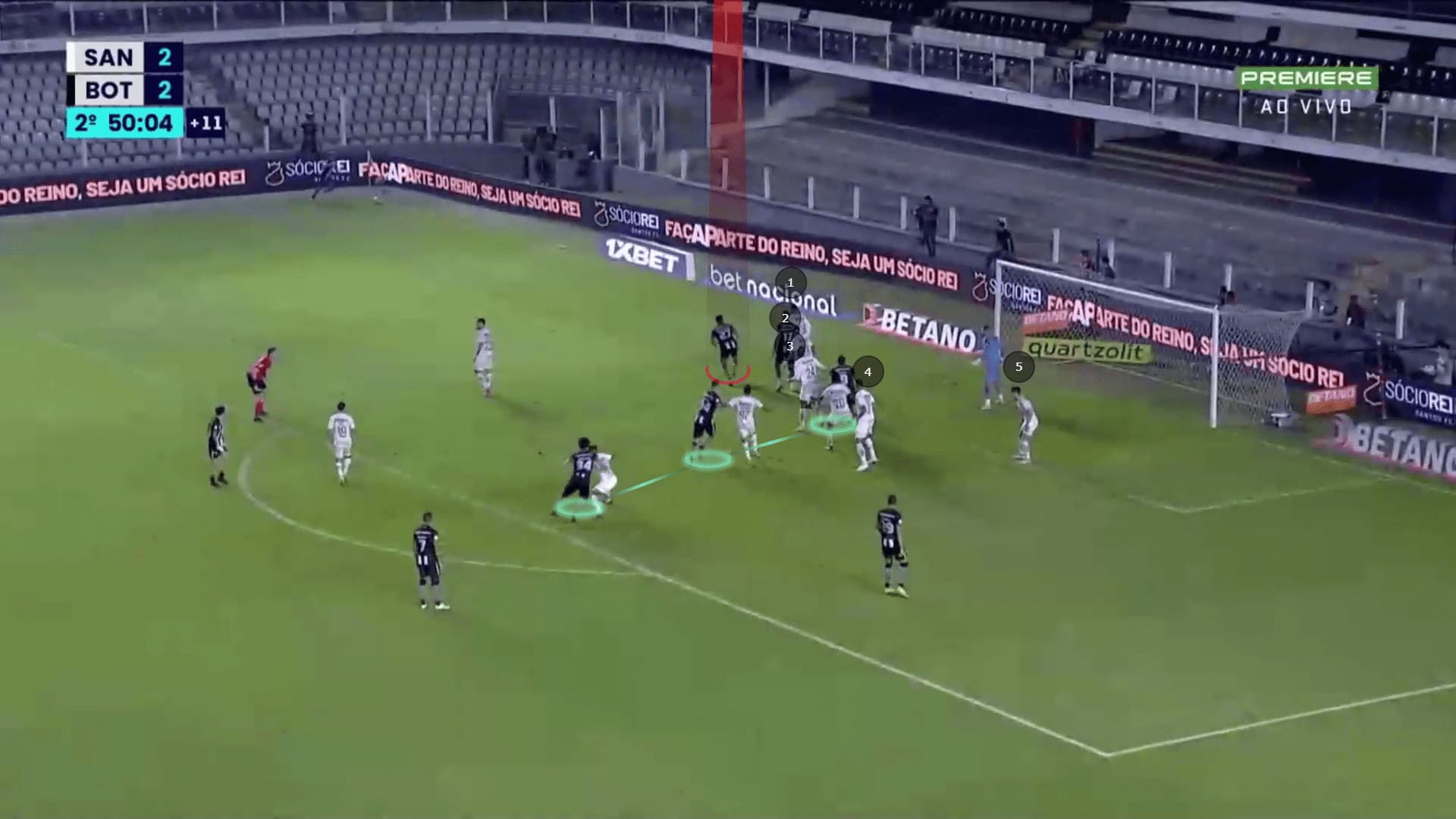
The targeted player goes in front of the line without marking, so his head shot is too strong and easily directed, as shown below in red.
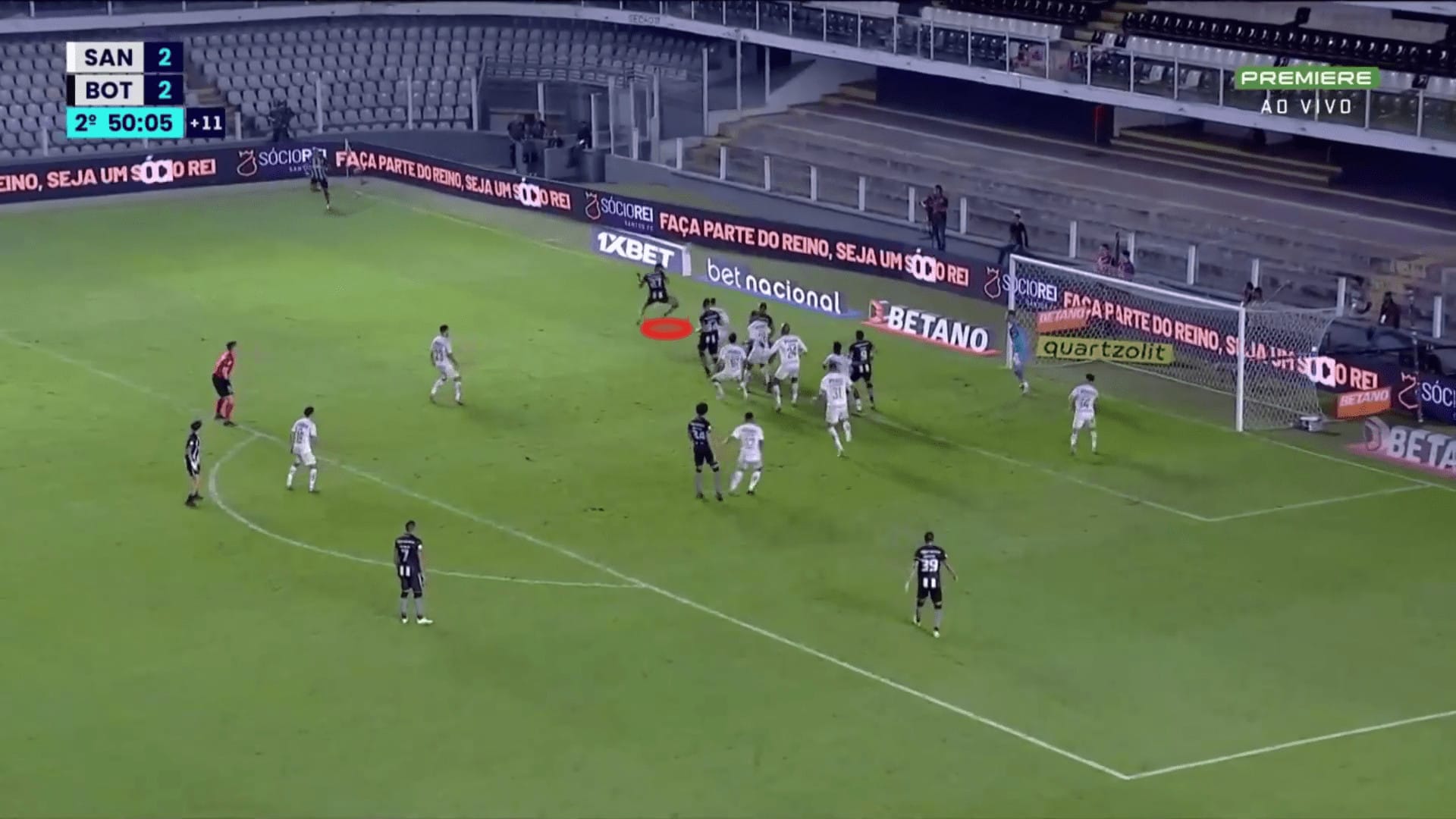
The last defender of the zonal defending line gets the ball in the last moment from the goal’s line, as shown below in green.
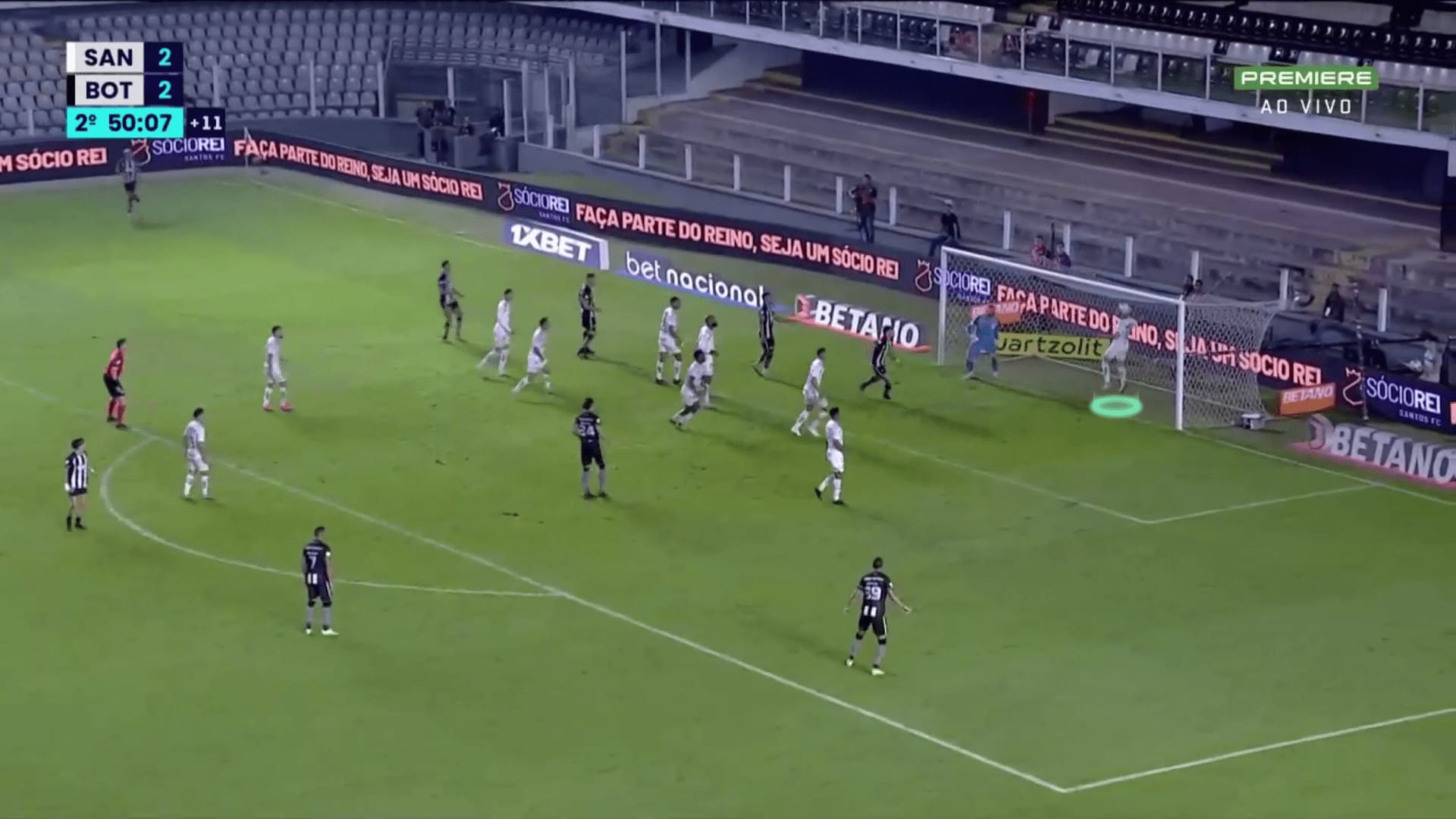
Here, they use another routine by the same free attackers on the near post: flick the ball from the same area in front of the near post before the line without marking.
In the first photo, the same five zonal defenders are numbered in black, and the three man-markers are highlighted in green, so our targeted player is free, highlighted in red, so he goes to flick the ball.
The cross is short and inaccurate in the second photo, but the red-highlighted attacker touches the ball with his uncle, so it goes more floated.
It looks like the flick while the two green attackers, highlighted in green, try to escape from their man-markers in the future to receive the second ball.
In the third photo, the problem that faces the defender because of flicks is apparent because at the moment when the first targeted attacker touches the ball, the defenders look at him, taking their attention, so they lose communication with their markers for a moment, and that is enough to escape from man-marking, so our targeted player stands between his marker, in green, who miss communication with him looking at the ball and the zonal defender, in yellow.
In the fourth photo, the attacker gets the ball, but the shot is weak because of the zonal defender sticking to him, so the goalkeeper receives the ball easily.
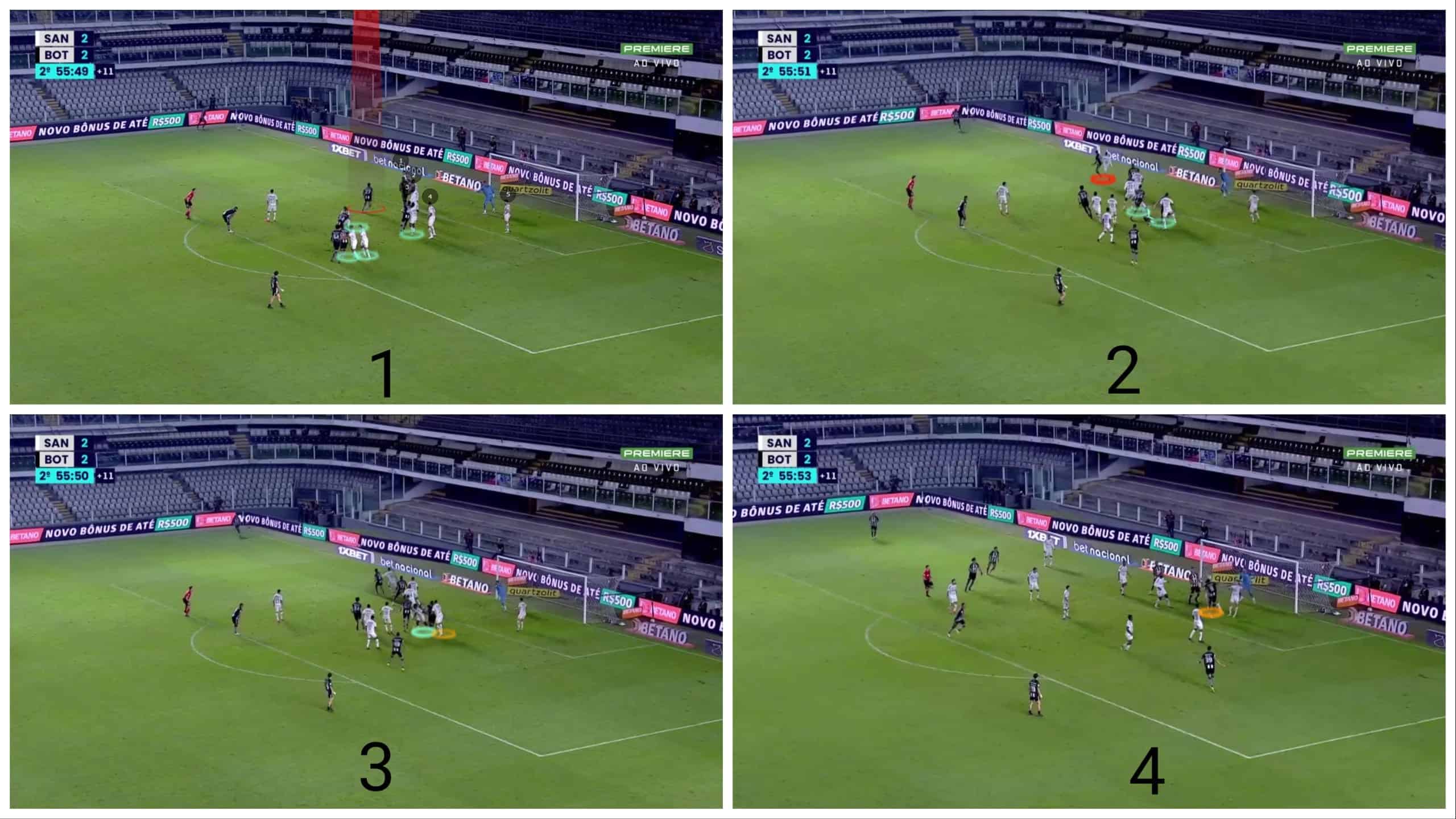
Using screens
They also use screens to escape from man-markers, but in a different way than usual; we will see how.
In the first photo, the opponent defends with four defenders in the zonal line, highlighted in green.
Four man-markers, highlighted in blue, a short option defender, highlighted in yellow and a rebound defender, highlighted in red.
In the second photo, the red-highlighted player runs in a curved run to get to the targeted area, shown in black, to use their mates, highlighted in blue, as a screen because when he passes over them, they will obstruct his marker’s path, as shown in the third and the fourth photos.
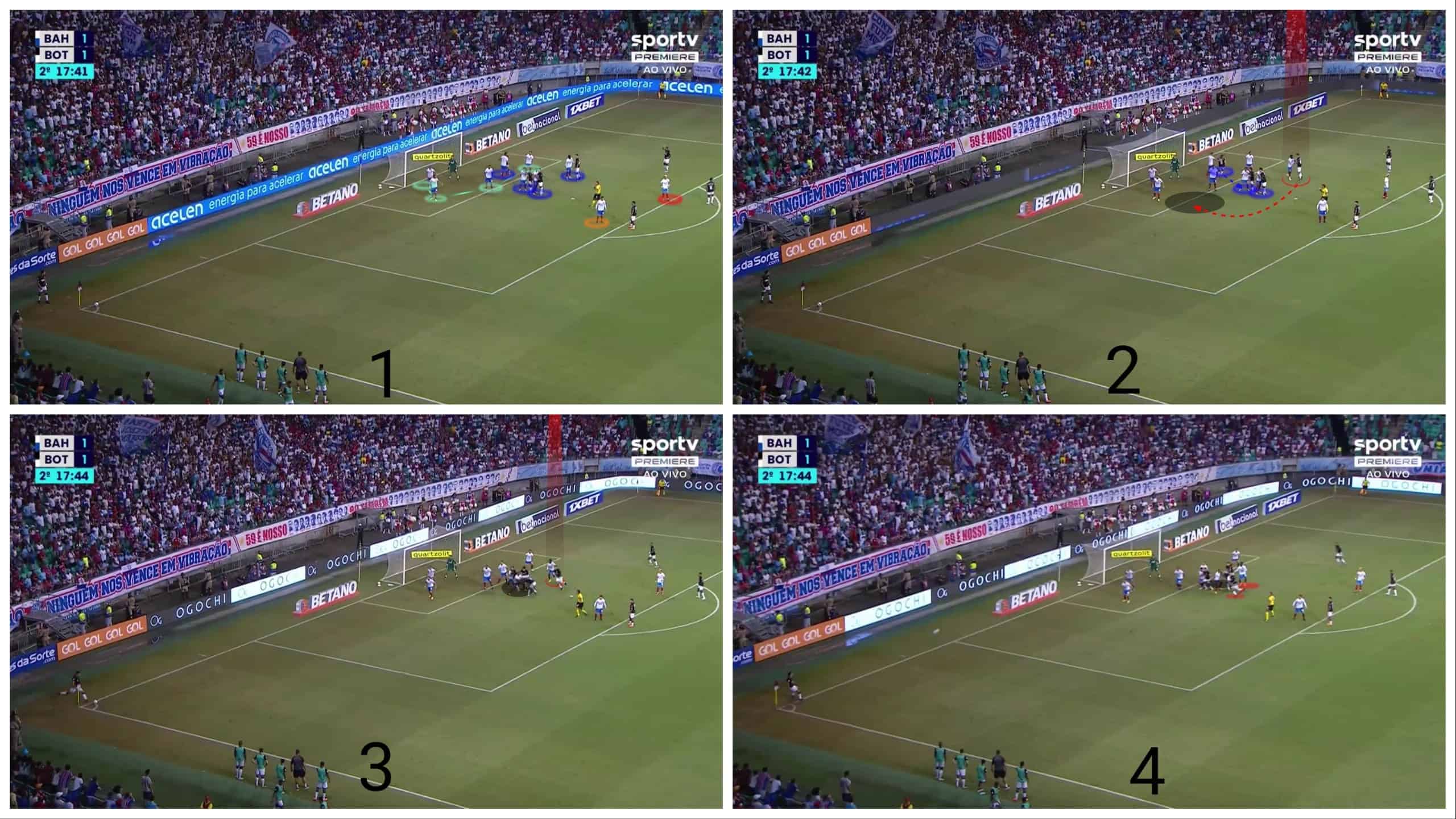
The plan works, and he gets the ball, as shown below.
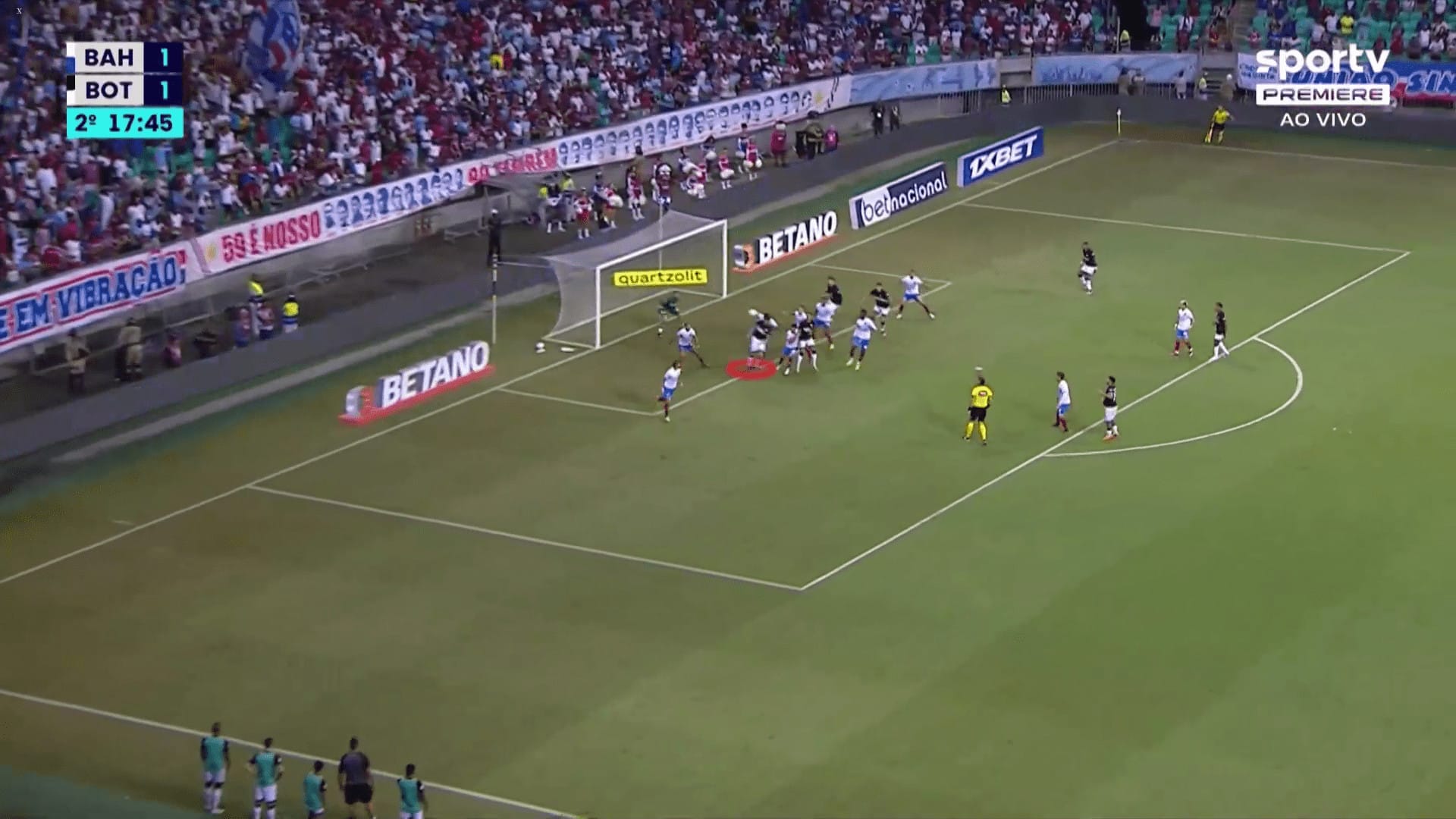
The headed shot is inaccurate, so it goes outside, as shown below in green.
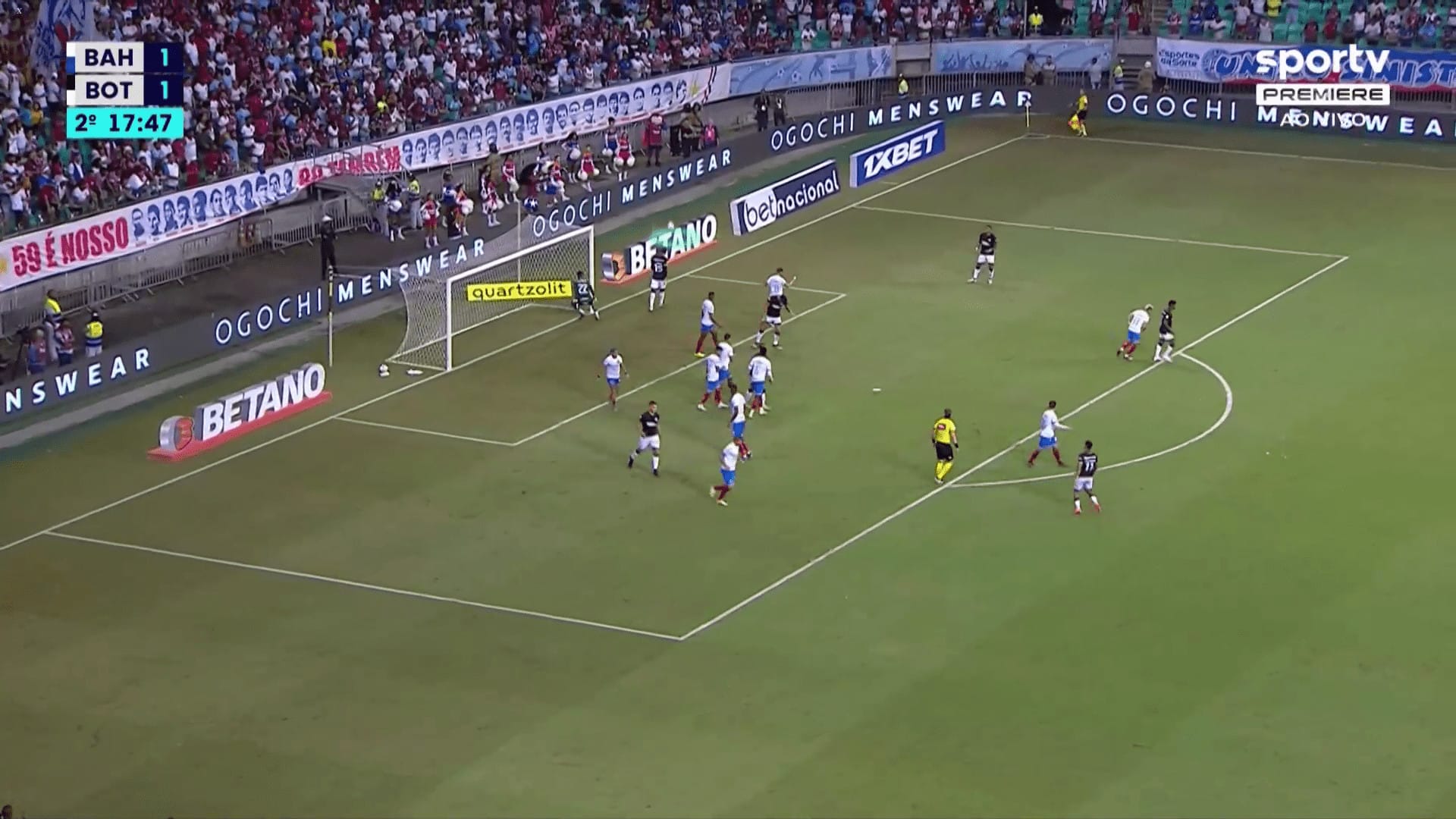
Conclusion
This analysis has shown the different tactics of Botafogo in attacking corners and how varied and effective they are.
They rely heavily on floated crosses, late runners who overload a particular area or free a player and also on screens to free the targeted player from man-marking.

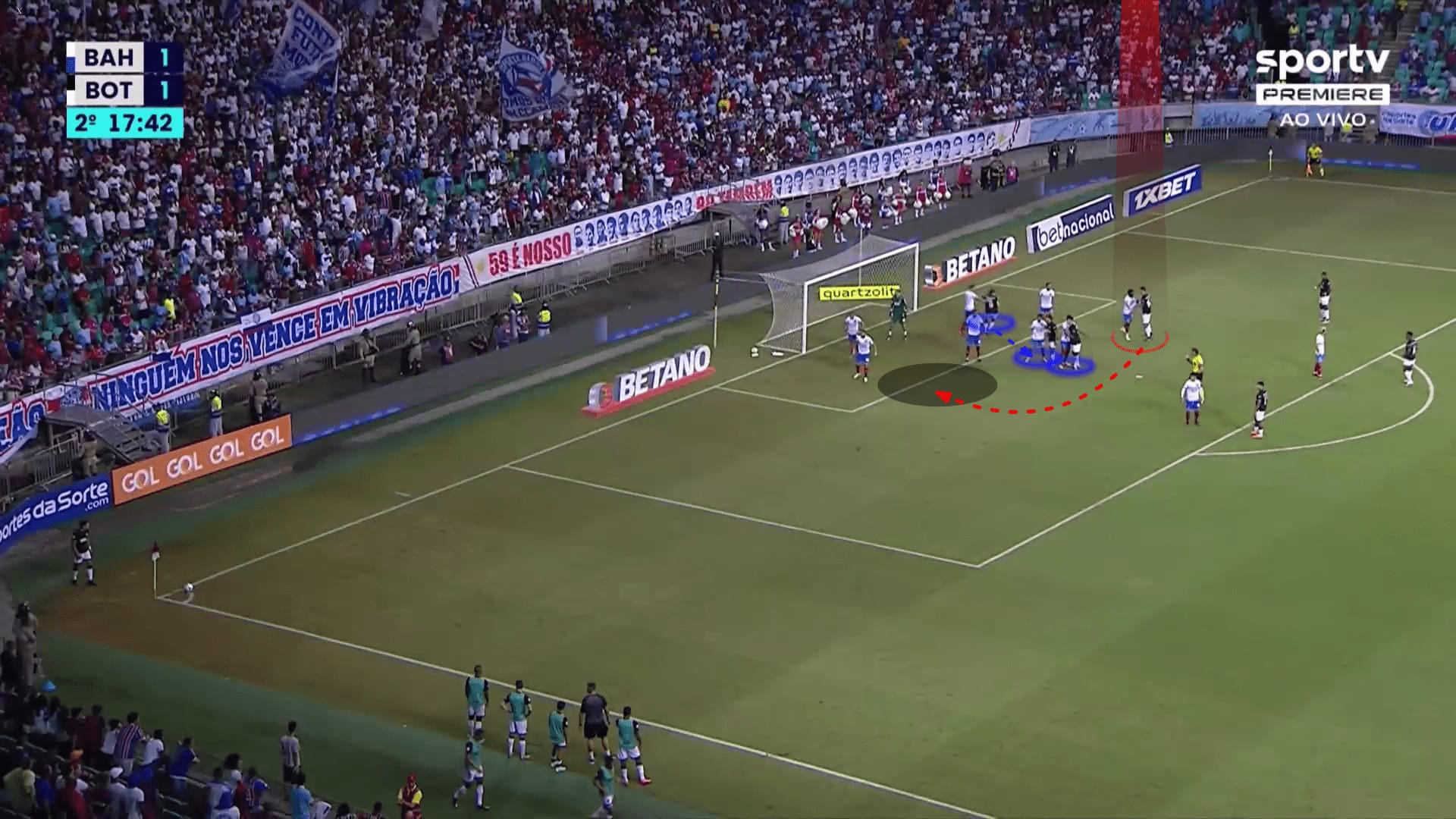




Comments